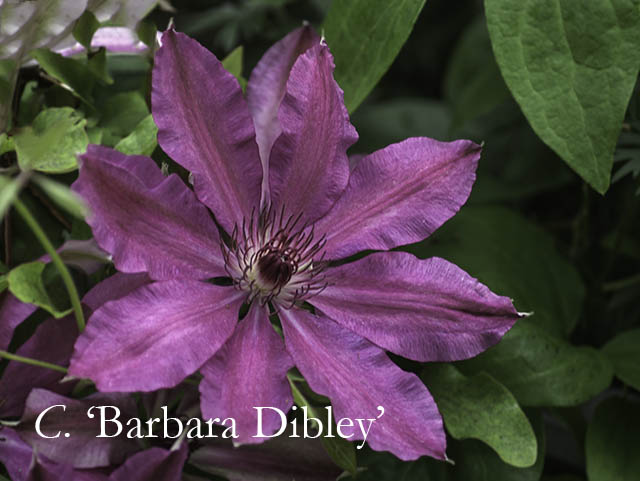To my dismay I read an online article from the Vancouver Sun titled: “How to Keep Your Garden Looking Great All Summer”. In it are some seasonal tips about watering practices including this suggestion: “Don’t use a sprinkler around your clematis”. Being a clematis crusader, over the years I have read things that I believe are a bit misguided, but I have normally just ignored them as long as they didn’t seem to hurt anyone. In this case I can only imagine what a new clematis gardener must be thinking after reading the Sun’s article which I suggest you do before reading mine. Once you have read it, I’m sure you will understand why I decided to weigh in on the subject of the use of sprinklers around clematis.
I’m sure if you could ask your clematis about its preference of receiving a supply of moisture, whether it be via rain, a drip system, soaker hoses, hand watering or an automatic sprinkler system, it would tell you it doesn’t really matter to them which delivery system is used as long as it is given enough water to survive. I would like to point out that it is imperative that you allow the soil that they are growing in to dry out briefly in between each watering so that their roots can acquire the sufficient amount of oxygen necessary to survive. This is not a characteristic exclusive to clematis, most plants in your garden possess that trait. So, to have someone vilify home sprinklers as some type of executioner or assassin seems a bit of an exaggeration. It is “not” the fault of the automatic sprinklers if a clematis should fail (i.e. go to heaven), rather it could be the result of poor placement of the sprinkler heads, insufficient coverage (the spray doesn’t reach its target), and/or an inadequate or overadequate rate of use (meaning the amount of time and how often the system is programmed to turn on and off). The trick to using automatic sprinkler systems correctly is to find the right balance of how often and how much water is required to meet your garden’s needs, whether it be for your clematis, other perennials, a lawn etc. That trick in my opinion is to always water deeply and then before rewatering give the soil a chance, as I suggested earlier, to dry out partially. Unless you live in the Mohave Desert or some other extremely arid locale, you probably should never irrigate your lawn, or for that matter the rest of the garden, every day. Keep in mind that your reapplication times will vary throughout the year and should be based on weather conditions, not some arbitrary schedule you programmed into your automatic system just to make it convenient for you.
In my garden I grow clematis both in the ground and in containers. The clematis I have growing in the ground are being watered by sprinklers which are not on a programmable system. My modus operandi is to use a good old-fashion egg timer to remind me to manually turn each of the systems on and off. Even though this means a little more effort on my part, this method ultimately gives me more control over how I water my garden. I’ve been using this non-automated sprinkler method on my clematis since 1994 and they are doing just fine thank you. So are all of my roses, my perennials and the lawn. So, the Clematis Queen gives you her royal blessing to feel free to let your sprinklers shower your clematis for their much needed aqua pura, but just make sure they the sprinkler heads are adjusted correctly and the system is timed to allow for the proper soil saturation. Be assured that I would never advocate you do something that would harm your babies.
Footnote (pun intended): Sadly, theVancouver Sun article also included the urban legend about the having their feet in the shade.
To learn more about “Debunking the Tallest Tale About Clematis” go to: http://www.clematisqueen.com/content/debunking-tallest-tale-about-clematis
